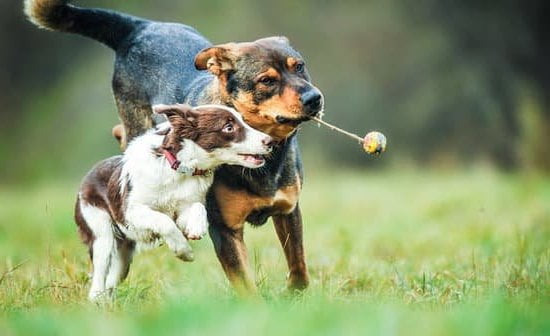Does your dog struggle with staying in their crate? Many pet owners face this challenge when it comes to crate training. In this article, we will explore the ins and outs of training your dog to stay in their crate, from understanding the purpose of crate training to troubleshooting common problems that may arise. With the right techniques and positive reinforcement, you can help your furry friend feel comfortable and secure in their crate.
Crate training serves as a valuable tool for both you and your dog. It provides a safe space for your pet while also aiding in housebreaking and preventing destructive behaviors. Choosing the right crate is the first step towards successful training, as it sets the foundation for a positive experience for your dog.
Introducing your dog to the crate in a positive way is essential in establishing a sense of security and comfort. By using positive reinforcement techniques and gradually increasing the duration of time spent in the crate, you can teach your dog to love their crate as a safe and comfortable space.
Join us as we delve into the various aspects of crate training, providing tips and solutions for making this experience a positive one for both you and your canine companion.
Choosing the Right Crate for Your Dog
Understanding Your Dog’s Size and Needs
When it comes to choosing the right crate for your dog, it’s important to consider their size and specific needs. A crate that is too small can make your dog feel cramped and uncomfortable, while a crate that is too big may not provide the sense of security and coziness that your dog needs.
Take into account your dog’s adult size when selecting a crate, and if you have a puppy, choose a crate with an adjustable divider to accommodate their growing size.
Considering Material and Design
Crates come in different materials such as plastic, wire, or fabric. Each has its own pros and cons, so take into consideration factors such as portability, durability, visibility, ventilation, and ease of cleaning. Additionally, consider the design of the crate – some dogs may feel more secure in a covered crate while others may prefer an open-style one.
Exploring Crate Accessories
To make your dog feel comfortable in their new space, consider adding accessories such as a cozy bed or blanket, favorite toys or chew treats. Some dogs also respond well to having a water bowl attached to their crate. These accessories can help create positive associations with the crate and encourage your dog to see it as a safe and enjoyable space. This will help in teaching your dog to stay in their cage without feeling anxious or stressed.
Introducing Your Dog to the Crate in a Positive Way
When it comes to crate training your dog, it’s important to start off on the right foot. Introducing your dog to the crate in a positive way can set the tone for their entire crate training experience. Here are some tips on how to make the introduction as smooth and positive as possible:
1. Make the crate inviting: Start by placing the crate in an area where your dog spends a lot of time, such as the living room or bedroom. You can make the crate inviting by placing a comfy blanket or bed inside, along with some familiar toys or treats.
2. Let them explore at their own pace: Once the crate is set up, allow your dog to explore it at their own pace. Keep the door open and let them investigate without any pressure. You can encourage them with treats or praise when they show interest in the crate.
3. Positive associations: To create positive associations with the crate, consider feeding your dog near or inside the crate. This will help them view the crate as a positive and comfortable space rather than a place of confinement.
By introducing your dog to their crate in a positive way, you are laying the foundation for successful crate training. Remember to be patient and consistent in your approach, and soon enough, your dog will learn to love their cozy little den.
Crate training takes time and effort, but with patience and positive reinforcement, you can teach your dog to stay in their cage comfortably and happily.
Teaching Your Dog to Love Their Crate
To train your dog to stay in their cage, it’s important to teach them to love their crate. This section will provide you with tips and techniques on how to make the crate a positive and comfortable space for your furry friend.
One of the first steps in teaching your dog to love their crate is to create a positive association with it. You can start by placing treats or toys inside the crate and encouraging your dog to go in and explore. It’s important not to force them into the crate, as this can create negative feelings towards it.
Another way to make the crate a welcoming space is by feeding your dog their meals inside the crate. This will help them associate the crate with something positive, such as mealtime. Additionally, providing comfortable bedding and blankets inside the crate can make it a cozy and inviting space for your dog.
Using positive reinforcement techniques is crucial in teaching your dog to love their crate. Whenever they voluntarily go inside the crate or show positive behavior while inside, be sure to praise and reward them. This will help them understand that being in the crate is a good thing and can lead to enjoyable experiences.
Overall, patience and consistency are key when teaching your dog to love their crate. By creating positive associations, using rewards, and making the space comfortable, you can help your dog see their crate as a safe and comforting environment. Remember that every dog is different, so it may take time for them to adjust – but with practice and encouragement, they can learn to enjoy spending time in their crate.
Establishing a Routine for Crate Time
Consistency Is Key
When it comes to crate training your dog, establishing a routine is essential. Dogs thrive on routine and structure, so creating a consistent schedule for crate time will help your furry friend feel more comfortable and secure. Determine specific times of the day when your dog will go into their crate, such as during meal times or when you leave the house. Stick to this routine to minimize confusion and anxiety for your pet.
Gradual Introduction
To ensure that your dog learns to stay in their cage without feeling distressed, it’s important to gradually introduce them to the concept of crate time. Start by leaving the door open and allowing your dog to explore the crate at their own pace. Place some treats or toys inside to make the experience positive and rewarding for them. Once they start showing interest in the crate, gently encourage them to go inside without using force.
Setting Boundaries
As you establish a routine for crate time, be mindful of setting clear boundaries for both you and your dog. Avoid using the crate as punishment, as this can lead to negative associations with it.
Instead, focus on creating a positive environment where your dog feels safe and relaxed. By setting consistent rules and boundaries around crate time, you can help your dog understand when it’s appropriate to be in their cage and when they are allowed to be outside of it.
By following these steps and being patient with your furry companion, you can successfully train them to stay in their cage without experiencing stress or anxiety. Remember that every dog is unique, so it’s important to tailor your approach based on their individual needs and personality traits.
Using Positive Reinforcement Techniques
Positive reinforcement is a powerful tool for training your dog to stay in their crate. It involves rewarding your dog for exhibiting the desired behavior, in this case, staying calmly in their crate. This technique helps to create a positive association with the crate and encourages your dog to willingly spend time inside it.
One effective way to use positive reinforcement when crate training your dog is by offering treats and verbal praise. Whenever your dog enters the crate voluntarily or remains calm inside, immediately reward them with a small treat and verbal praise such as “good boy/girl.” Over time, your dog will learn that being in the crate leads to positive experiences, making them more likely to comply.
It’s important to note that consistency is key when using positive reinforcement techniques. Always reward your dog for good behavior inside the crate, but refrain from acknowledging them if they whine or bark to be let out. This helps convey the message that calm behavior is what earns the rewards. With patience and consistency, you can effectively train your dog to see their crate as a safe and enjoyable space.
| Positive Reinforcement Example | Description |
|---|---|
| Treats | Offering small treats when your dog displays calm behavior inside the crate. |
| Verbal Praise | Using phrases like “good boy/girl” when your dog voluntarily enters or stays calmly in the crate. |
Dealing With Separation Anxiety While Crate Training
Separation anxiety is a common issue that many dog owners face when trying to train their dogs to stay in their crate. Dogs may exhibit signs of distress, such as barking, whining, or destructive behavior, when they are left alone in their crate. It’s important for dog owners to address these issues with patience and understanding.
One way to help your dog overcome separation anxiety in their crate is to make the crate a positive and comfortable space for them. This can be done by placing familiar and comforting items inside the crate, such as a blanket or toy that they love. Additionally, leaving an article of clothing with your scent on it can provide reassurance to your dog while they are in the crate.
Another effective method for dealing with separation anxiety during crate training is gradually increasing the amount of time your dog spends in the crate. Start with short periods of time and slowly increase the duration as your dog becomes more comfortable. This will help prevent feelings of panic or fear associated with being confined in the crate for extended periods.
Using positive reinforcement techniques can also help alleviate separation anxiety during crate training. Reward your dog with treats and praise when they enter the crate willingly and remain calm while inside. By associating positive experiences with the crate, your dog will begin to view it as a safe and secure place.
Overall, addressing separation anxiety during crate training requires patience, consistency, and a deep understanding of your dog’s needs. With proper introduction and positive reinforcement, you can train your dog to stay in their cage without experiencing distress or anxiety.
Troubleshooting Common Crate Training Problems
Crate training can be an effective tool for managing your dog’s behavior, but it doesn’t always go smoothly. Many dog owners encounter common problems when trying to train their furry friend to stay in their cage. One common issue is that dogs may whine, bark, or exhibit signs of anxiety when placed in the crate. This behavior can be distressing for both the dog and the owner, but there are ways to address this problem.
One important factor to consider is whether the crate is the right size for your dog. If the crate is too small, it can be uncomfortable for your pet and may contribute to their negative reaction towards it. On the other hand, if the crate is too large, your dog may use one side as a bathroom area and the other as a resting space, which defeats the purpose of crate training.
Another common problem is that some dogs may try to escape from their crate by biting or scratching at the bars. This behavior can be frustrating for pet owners and potentially harmful for the dog if they injure themselves in the process. It’s important to address this issue calmly and with patience.
In addition to these issues, some dogs may show reluctance to enter their crate voluntarily. This could be due to a lack of positive association with the crate or fear of being confined. In such cases, it’s crucial to approach crate training with positive reinforcement techniques and gradually build up your dog’s comfort level with being in their cage.
| Common Crate Training Problems | Problem-Solving Tips |
|---|---|
| Whining, barking, or anxiety | Ensure proper crate size; Use positive reinforcement; Gradually increase time spent in crate |
| Escape attempts | Use a secure crate; Provide mental stimulation; Address separation anxiety |
| Reluctance to enter crate | Create positive associations; Use treats and toys; Be patient and consistent |
Gradually Increasing the Duration of Crate Time
When it comes to crate training your dog, one of the key steps is to gradually increase the duration of time they spend in their crate. This process should be done slowly and with patience to ensure that your dog feels comfortable and secure in their crate. Here are some tips on how to accomplish this:
1. Start small: Begin by having your dog spend short periods of time in their crate, such as 5-10 minutes at a time. Use treats or toys to help create positive associations with being in the crate.
2. Slowly increase time: Over the course of several days or weeks, gradually increase the amount of time your dog spends in their crate. For example, you can extend the time to 15-20 minutes, then 30 minutes, and so on.
3. Monitor behavior: Pay attention to your dog’s behavior during crate time. If they seem anxious or uncomfortable, take a step back and return to shorter durations before trying to increase again.
It’s important to remember that every dog is different and may need more or less time to adjust to being in their crate for extended periods. By taking it slow and using positive reinforcement techniques, you can help your dog feel more at ease in their crate over time.
Remember that patience is key when training your dog to stay in their cage for longer periods. Understanding your pet’s behavior will allow you both get used to spending quality quiet times together while getting them trained just perfectly.
Making the Crate a Safe and Comfortable Space for Your Dog
In conclusion, crate training is an important aspect of dog ownership that can benefit both you and your furry friend. Understanding the purpose of crate training, choosing the right crate, and introducing your dog to the crate in a positive way are essential steps in this process. It’s important to remember that patience and consistency are key when it comes to training your dog to stay in their crate.
Using positive reinforcement techniques can help your dog associate the crate with positive experiences, making them more likely to willingly spend time inside. Additionally, establishing a routine for crate time and gradually increasing the duration of crate time can help your dog become more comfortable with being confined.
While some dogs may experience separation anxiety during crate training, there are methods for dealing with this issue and troubleshooting common problems that may arise. Ultimately, by making the crate a safe and comfortable space for your dog, you can ensure that they view it as their own special retreat rather than a place of confinement.
With proper training and patience, your dog will learn to love their crate and see it as a comfortable space where they can feel secure.
Frequently Asked Questions
How Do I Train My Dog to Stay in His Crate?
Training your dog to stay in his crate requires patience and positive reinforcement. Start by making the crate a comfortable and inviting space for your dog, using treats or toys to encourage him to go inside. Gradually increase the amount of time he spends in the crate, always positively reinforcing good behavior.
How Do You Train a Dog to Be in a Cage?
When training a dog to be in a cage, it’s important to make the cage a positive space for your pet. Begin by introducing the cage as a comfortable and safe area, using treats or toys to encourage your dog to enter willingly.
It’s also crucial to avoid using the cage as punishment, as this can create negative associations.
How Do I Keep My Dog From Getting Out of the Cage?
To keep your dog from getting out of the cage, it’s essential to ensure that the cage is secure and appropriate for your pet’s size and strength. Checking for any weak spots or gaps in the cage is important, as well as ensuring that all latches are properly secured.
Additionally, providing enough mental and physical stimulation outside of the crate can help reduce any desire to escape.

Welcome to the blog! I am a professional dog trainer and have been working with dogs for many years. In this blog, I will be discussing various topics related to dog training, including tips, tricks, and advice. I hope you find this information helpful and informative. Thanks for reading!





